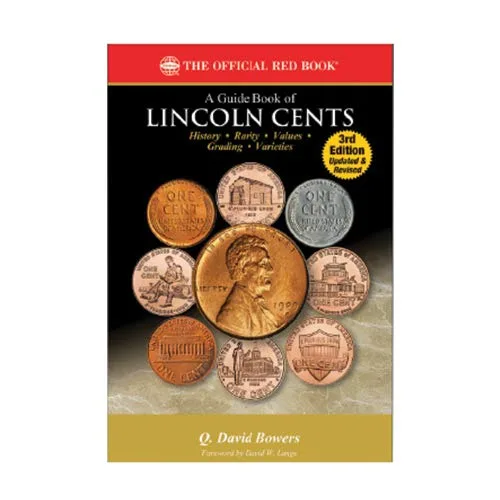In coin collecting, there are certain rare coins that even the general public knows are expensive and elusive.
- The 1943 bronze cent is one of those coins.
- The 1804 silver dollar is another.
But perhaps the one coin that really seems to keep getting attention (and deservedly so) is the 1909 S VDB penny.
Learn the story behind this rare but popular coin. See why it’s so rare, and what it’s worth today…
Why All The Fuss?

So, why is the 1909-S VDB penny so special?
Perhaps the most important part of the story all comes down to the initials on the back of the coin.
V.D.B. are the initials for Victor David Brenner, the renowned designer of the Lincoln cent.
Brenner placed his initials on the reverse side of the coin — near the bottom rim, below the wheat stalks.
The “S” underneath the date is the coin’s mint mark, indicating that this coin was made at the San Francisco Mint.
While the public generally loved the Lincoln cent when it was first released, one particular problem that some had with the coin was the prominence of Brenner’s initials on the coin.
People simply thought the initials were too obvious and large.
The U.S. Mint responded to the outcry by removing Brenner’s initials altogether.
But the situation was that the U.S. Mint had already produced millions of the pennies with the prominent VDB initials.
While most of the 1909 VDB cents were produced in Philadelphia, only 484,000 of the VDB pennies rolled out of the San Francisco Mint.
Now, 484,000 specimens of a coin may not sound like a number low enough to be considered rare — but think about the immense popularity of the Lincoln cent. Lots of people collect Lincoln pennies!
Therefore, the demand for the key-date 1909-S VDB penny becomes all too obvious.
In fact, of all the modern coins produced, the 1909-S VDB penny is certainly among the most popular and it is also considered relatively scarce.
1909-S VDB Penny Value
The 1909 S VDB penny is indeed one of the most expensive regular-strike (non-error) rarities of modern U.S. coins.
It is also one of those coins that has seen virtually nothing but an upward trend in values for the last several decades.
The value of a 1909-S VDB cent is around $700 to $800 in a grade of Good.
In Uncirculated grades, this U.S. penny is worth upwards of $1,800.
There have been some badly worn, even damaged, 1909-S VDB pennies that can occasionally be found on eBay and in coin dealers’ catalogs. Even these unsightly pieces often go for at least $300.
Cull coins like this make great filler pieces, but stick to the problem-free coins for a better chance of reaping rewards on your investment when buying rare coins such as the 1909-S VDB cent.
What Ever Happened To The 1909-S VDB Penny?
The initials that caused so much controversy in 1909 were absent from the coin until 1918.
In 1918, the V.D.B. initials were restored to the coin — this time, in much smaller characters under Lincoln’s bust on the obverse of the coin.
The initials are still there to this day, but it may take a magnifying glass to see the tiny letters!
More About 1909-S VDB Penny Value
I’m the Coin Editor here at TheFunTimesGuide. My love for coins began when I was 11 years old. I primarily collect and study U.S. coins produced during the 20th century. I’m a member of the American Numismatic Association (ANA) and the Numismatic Literary Guild (NLG) and have won multiple awards from the NLG for my work as a coin journalist. I’m also the editor at the Florida United Numismatists Club (FUN Topics magazine), and author of Images of America: The United States Mint in Philadelphia (a book that explores the colorful history of the Philadelphia Mint). I’ve contributed hundreds of articles for various coin publications including COINage, The Numismatist, Numismatic News, Coin Dealer Newsletter, Coin Values, and CoinWeek. I’ve authored nearly 1,000 articles here at The Fun Times Guide to Coins (many of them with over 50K shares), and I welcome your coin questions in the comments below!


